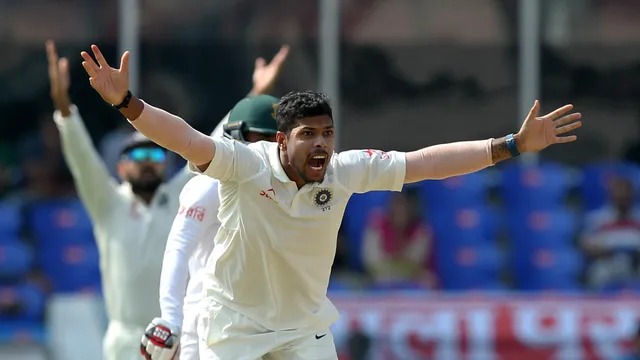
It was day three of the Boxing Day Test during India’s 2011-2012 tour of Australia, and all of a sudden, there was a murmur in the media box. The cause was something flashed on the giant screen. In listing the fastest deliveries bowled in the match, the first four entries, if I remember correctly, read: “Umesh Yadav 151 kmph, Umesh Yadav 149 kmph, Umesh Yadav 148.6 kmph, Umesh Yadav 148 kmph.”
Clearly, it was a first in the annals of Indian cricket. A young Indian fast bowler consistently clocking 150 kmph and creating serious discomfort for the opposition batsmen was a rare sight. Ishant Sharma had done so fleetingly on the 2007-8 tour, but had lost pace within the next year and a half. Umesh, despite several injuries, retains his pace and still clocks 140kmph fairly consistently 13 years into his international career.
That’s all that he retains. It is important to accept that Umesh isn’t the bowler one had expected him to be when he burst on to the Test scene in 2011-2012. A case of unfulfilled promise. He has been superseded by Mohammed Siraj and Mohammed Shami. Had Jasprit Bumrah been fit, Umesh would have not played the World Test Championship (WTC) final. In fact, for a while now, Umesh has been India’s back-up fast bowler, at best.
A revival of sorts in IPL 2022, despite his team not doing well, suggested that Umesh had, all of a sudden, discovered new verve. That he was willing to dig deep, reinvent himself, be a little more patient and yet bowl fast, which had defined him in the first place. And yet again, when he got the mother of all opportunities in London, he wasn’t up to the mark. Perhaps this was his last real chance. Umesh’s last real roll of the dice.
With Bumrah sitting out, Umesh had the opportunity of being Rohit Sharma’s go-to man when the score read 76-3. Zaheer Khan had turned things around for himself and India with his performances in South Africa in 2006, and England in 2007. Thereafter, he was a very different bowler, easily one of the world’s best for the next few years.
Can Umesh do the same for himself and India going forward? Will he get another opportunity in the West Indies, or will the selectors not decide to move on?
Despite his stop-start career, two simple attributes define Umesh. The first is his determination not to sacrifice pace despite the many injuries. He could have easily cut down on pace, and settled for medium-fast bowling in an attempt to prolong his career. With a few more years of IPL possible, this may well have been the pragmatic option. Not so for Umesh. He opted for fast over medium and, in doing so, even put his career at risk.
The second is his ability to reinvent and rediscover. He had a breakout home season in 2016-17, and was lethal with the old ball. That came from a deeper understanding of his own strengths. “Umesh is much more confident and calm,” Bharat Arun, then bowling coach, had said. “He knows what he is capable of and isn’t anxious to pick up a wicket with every ball he bowls. Even if the batsmen has hit him for a few boundaries, he is mature enough to back himself and do what he he wants to do.”
Can Umesh do what he does at home in more helpful overseas conditions? One final push perhaps? Can he maintain the balance that Arun was talking about? Is he fit enough to perform consistently for the whole of the next WTC cycle? And can he do what Zaheer did in 2007, when his spells at Trent Bridge gave India their only series win in England since 1986?
Sadly for India, Umesh was never the main man, despite all the potential. Not once in his 13-year-long international career has he been the spearhead. The question now is whether he can even be part of the support cast going forward.



